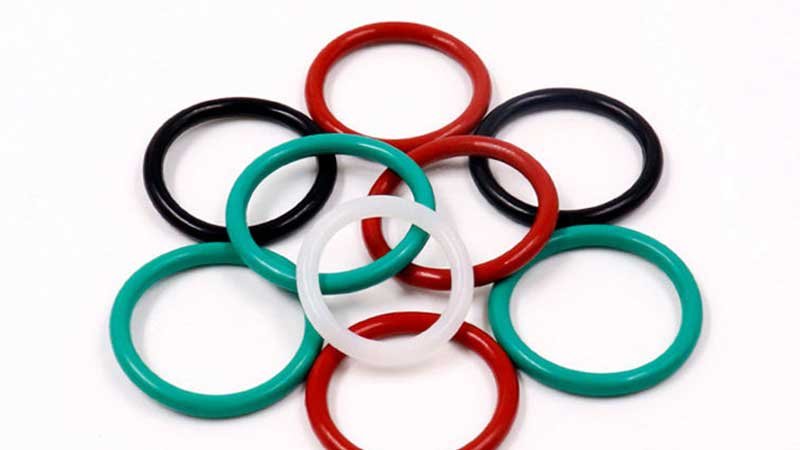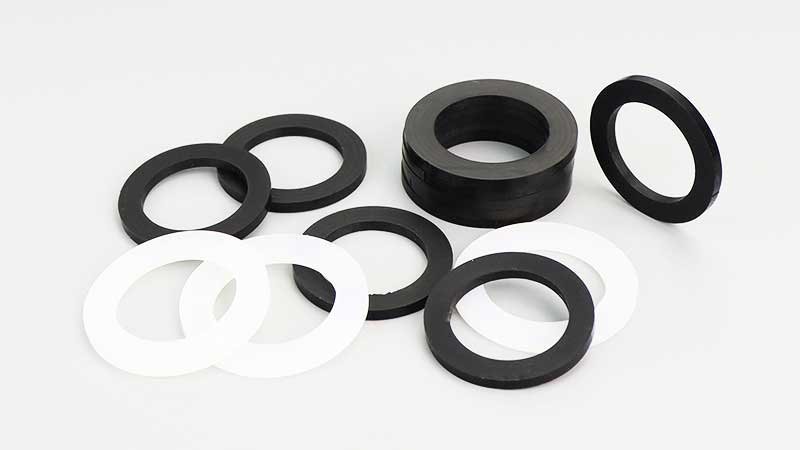Not sure which silicone production method to choose? I will introduce you to a common production method. Silicone compression molding is a widely used silicone manufacturing process. In this guide, we’ll provide an introduction to compression molding, its workflow, key production parameters, advantages, disadvantages and applications.
What Is Compression Molding?
Silicone compression molding is a silicone manufacturing process. It involves placing a measured amount of silicone compound into a heated mold, then applying pressure to form the part. The mold is designed to the specific shape of the desired product, and silicone cures under heat and pressure. It offers advantages such as cost-effectiveness, excellent dimensional stability, and versatility in design, and is especially suitable for small to medium production runs.
What Materials Are Suitable for Compression Molding?
Compression molding for silicone mainly uses a few specific types of materials. Each has its own traits and is suited for different applications.
| Material Type | Key Features | Description |
| Solid Silicone Rubber (SSR) | High viscosity; comes in block or sheet form | This is the most common material for compression molding. Before use, it needs to be pre-mixed (with curing agent, pigment, etc.) and pre-formed into shapes that match the mold. It’s ideal when weight and placement must be precise. |
| High-Temperature Vulcanized Silicone (HTV) | Handles higher mold temperatures; cures quickly | HTV silicone is stable at high temperatures and cures fast, which helps shorten the production cycle. It’s a type of solid silicone, known for its speed and heat resistance. |
Note: Although Liquid Silicone Rubber (LSR) is also a type of silicone, it’s not suitable for compression molding. LSR flows very easily and is designed for injection molding. In compression molding, its low viscosity can make it hard to control. It may overflow from the mold’s parting lines, making it unsuitable for this process.
How Does Compression Molding Work?
1. Material Prep
- Silicone Mixing: Raw silicone rubber is mixed with curing agents, color paste, and reinforcing additives in precise ratios. This step directly affects the final product’s color, hardness, and strength.
- Cutting and Weighing: The mixed material is cut into blocks or sheets and carefully weighed based on the product’s size and weight. Too little material can lead to incomplete parts; too much causes waste and extra flash.
- Pre-forming (Optional): For complex or multi-cavity molds, pre-forming the material into a shape close to the cavity helps improve filling efficiency and reduce excess flash.
2. Mold Prep
- Cleaning and Release Agent: The mold surface must be clean and dust-free. A light, even spray of release agent helps ensure smooth demolding with no marks left on the product.
- Preheating the Mold: The mold is heated to the required curing temperature—typically between 150°C and 200°C. Even heating ensures the silicone cures quickly and evenly during molding.

3. Precise Loading and Tight Closure
- Placing the Material: The silicone blocks are placed directly into the mold cavities. Proper placement affects the accuracy and consistency of the finished part.
- Closing and Pressurizing: The press closes the mold tightly. High pressure, usually between 10 and 100 MPa, is then applied. Under this heat and pressure, silicone flows into every part of the cavity and pushes out trapped air. This helps avoid bubbles and ensures complete filling.
4. Curing Under Heat and Pressure
This is where the magic happens. Under high temperature and pressure, the curing agent triggers a chemical cross-linking reaction. The silicone transforms from a soft, moldable material into a strong, elastic solid.
Curing time depends on thickness, silicone type, and temperature. It usually ranges from several seconds to a few minutes.
5. Demolding and Finishing
Opening the Mold:
Once cured, the mold is opened, and the silicone part is removed.
Post-Processing:
- De-flashing:
Any excess silicone around the edges is removed to improve appearance. Methods include manual trimming, die-cutting, cryogenic deflashing, or surface grinding.
- Post-Curing (Optional but Recommended):
For high-end silicone products, especially food-grade or medical-grade, post-curing is often done. The part is baked in an oven at 150–200°C for several hours. This improves cross-linking, removes residual volatiles, and boosts durability, stability, and biocompatibility.
Cleaning and Inspection:
The final product is cleaned if needed and then checked for size, appearance, and performance to ensure it meets all quality standards.

What Are the Equipment and Mold Requirements for Compression Molding?
To achieve efficient and high-quality silicone compression molding, it’s important to choose the right molding equipment and have a well-designed mold.
Molding Equipment
The type and setup of the compression molding machine can directly affect product quality and production speed. Key requirements include:
- Vertical or Horizontal Press: Choose based on factory layout, product size, and operation preferences. Vertical presses save space and make manual loading/unloading easier. Horizontal presses can be more suitable for certain automated setups.
- Accurate Temperature Control (±1°C): Silicone vulcanization is very sensitive to heat. A system that keeps mold temperature within ±1°C helps ensure even curing and consistent product quality. Temperature swings may lead to under-curing, over-curing, or burnt spots.
- Auto Demolding or Ejector System (Optional): For large-volume production or complex shapes, an automatic ejector helps increase efficiency. It reduces manual work and lowers the risk of damaging parts during removal.
- Vacuum Function: Machines with a vacuum system can remove air from the mold cavity before pressure is applied. This helps improve product quality, reduce bubbles, and avoid voids, especially useful for products that require perfect appearance and structure.
Mold Design Tips
The mold is the heart of compression molding. A good design improves product precision, appearance, and efficiency.
- Vent Grooves: Small venting channels on the mold parting line help air escape when silicone fills the cavity. This reduces the risk of air bubbles, short shots, and burn marks, and gives the product a smooth finish.
- Parting Line Position: The parting line affects how easy it is to trim excess material and how the finished product looks. A smart design can hide the parting line and make trimming easier. This helps cut labor time and improve appearance.
- Silicone Placement in the Cavity: This refers to how the silicone spreads and flows under pressure. A well-designed mold allows the silicone to fill the cavity evenly, avoiding problems like flashing, deformation, or incomplete parts.
- Cooling System (Optional): Though silicone is heat-cured, adding cooling channels in the mold can improve cycle time. Rapid cooling after demolding helps speed up the next round of production and boost overall efficiency.

What Are Its Advantages?
Cost-Effective for Low to Medium Volume Production:
Silicone compression molding is cost-effective for small to medium production runs, due to the low upfront costs. The molds used in this process are simpler and less expensive than injection molds, making it ideal for prototypes, custom parts, or products with specialized designs.
Strong and Durable Parts:
Compression molded silicone parts possess stable structure, and are able to withstand harsh environments, extreme temperatures, and repetitive stress, so they are suitable for critical applications in industries such as automotive, medical, and electronics.
Versatility in Material Options:
Silicone compression molding can accommodate a wide variety of silicone, including both high-temperature vulcanizing silicone and liquid silicone rubber. This flexibility allows manufacturers to select the right material for specific performance requirements such as hardness, flexibility, and chemical resistance.
Low Waste Production:
The material waste in compression molding is minimal, especially when compared to injection molding, where excess material is typically trimmed after the molding process.
What Are Its Disadvantages?
Long Cycle Times
While compression molding is efficient for low-volume production, the cycle times are generally longer than those in injection molding. The process of heating, curing, and cooling takes more time, affecting overall production speed.
Labor-Intensive Process
Compression molding requires more manual work, such as loading the mold and monitoring curing. This often leads to higher labor costs and lower efficiency compared to automated methods.
Limited Production Scale
Silicone compression molding is better suited for smaller production runs. For large-scale manufacturing, other methods like injection molding or transfer molding may be more efficient due to their faster cycle times and ability to handle higher volumes with greater automation.

Applications of Silicone Compression Molding
Silicone compression molding is widely used across a variety of industries. The following table highlights the diverse applications of this process such as automotive, medical, consumer electronics, and more.
| Industry | Applications |
| Automotive Industry | Seals, gaskets, vibration dampers, bushings |
| Medical Industry | Medical seals, gaskets, surgical tools |
| Consumer Electronics | Keypads, buttons, protective covers, gaskets for electronics |
| Food & Beverage | Bakeware, kitchen tools, food-grade seals |
| Electrical Enclosures | Cable insulation, connectors, weatherproofing |
| Aerospace | Seals, gaskets, insulation, thermal protection components |
| Industrial Applications | O-rings, seals, vibration isolators |
| Sports & Fitness | Protective gear, grips, parts for exercise equipment |
| Toys & Baby Products | Non-toxic, flexible teething rings, pacifiers, baby toys |

Conclusion
Silicone compression molding provides several benefits, such as cost-efficiency for small to medium runs, high precision, and versatility in material choice. However, it also comes with challenges, including longer cycle times, higher labor intensity, and limitations when scaling up for mass production. Manufacturers need to carefully consider these pros and cons, taking into account factors like production volume, material requirements, and the desired level of precision for their project.